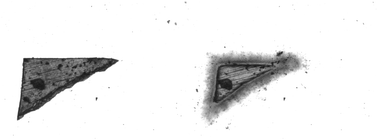Understanding the role of molar mass and stirring in polymer dissolution
Abstract
When a dry soluble polymer is put in contact with a large quantity of solvent, it swells and forms a transient gel, and eventually, yields a dilute solution of polymers. Everyday lab experience shows that when the molar mass is large, namely tens of times larger than entanglement mass, this dissolution process is slow and difficult and may require stirring. Here, in agreement with previous results, we found that the time needed to turn a dry grain into a dilute solution is not limited by water diffusion in the glassy or semi-crystalline dry polymer, but rather by the life-time of the transient gel made of entangled chains. In addition, we shed new light on the dissolution process by demonstrating that, in contrast to theoretical predictions, the gel life-time is not governed by reptation. We show instead that swelling is simply controlled by the osmotic pressure and the gel permeability until the overlap concentration is reached within the gel. At this stage, the gel turns into a dilute solution in which polymers are dispersed by natural convection. The observed dependence of the dissolution process on the molar mass therefore originates from the molar mass dependent overlap concentration. Under stirring, or forced convection, the polymer gel disappears at a higher critical concentration that depends on the shear rate. We suggest a description of the experimental data which uses the rheological flow curves of the solutions of the considered polymer. Inversely, dissolution times of polymer powders under stirring can be inferred from classical rheological measurements of the polymer solutions at varied concentrations.


 Please wait while we load your content...
Please wait while we load your content...